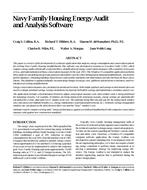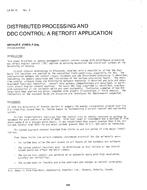This paper describes a method of comparing various pitot tube traverse methods without testing. This method requires a sophisticated desk calculator or a computer. In the initial study a Wang 700 series calculator was used. The examples in this paper were printed on a TSO terminal. See appendix for Basic Language programs used.
In determining fluid flow by means of a velocity pressure traverse or any method based on point measurement of velocity across a duct or pipe, it is important that the resulting velocity is equal, within acceptable tolerance, to the true average velocity of the fluid. Comparing the accuracy of different methods by computer not only saves the time involved in testing but, more importantly, eliminates all experimental errors. The results can be directly compared and are repeatable.
Mathematically defined velocity patterns of varying degrees of eccentricity and/or stratification can be programmed such that the velocity at any point or all points of a traverse can be obtained. In this paper a specific comparison study is described involving the existing and proposed pitot tube traverse considered by the AMCA 2l0/ASHRAE 51P Joint Committee for the revision of AMCA Standard 210-67.
This paper deals with the method by which the various traverse methods were compared rather than the development of the traverses themselves.
Citation: ASHRAE Transactions, Volume 81, Part 1, Atlantic City, NJ
Product Details
- Published:
- 1975
- Number of Pages:
- 25
- File Size:
- 1 file , 1.5 MB
- Product Code(s):
- D-AC-2335


